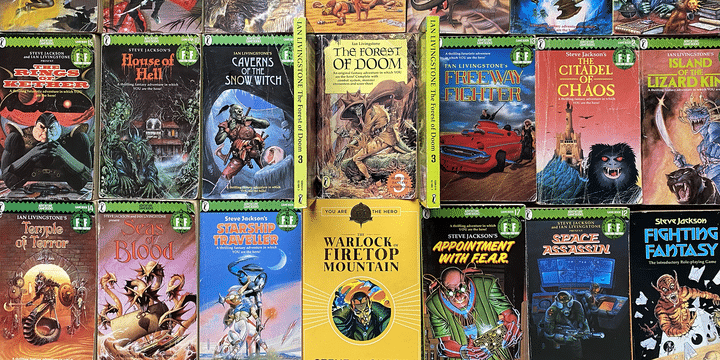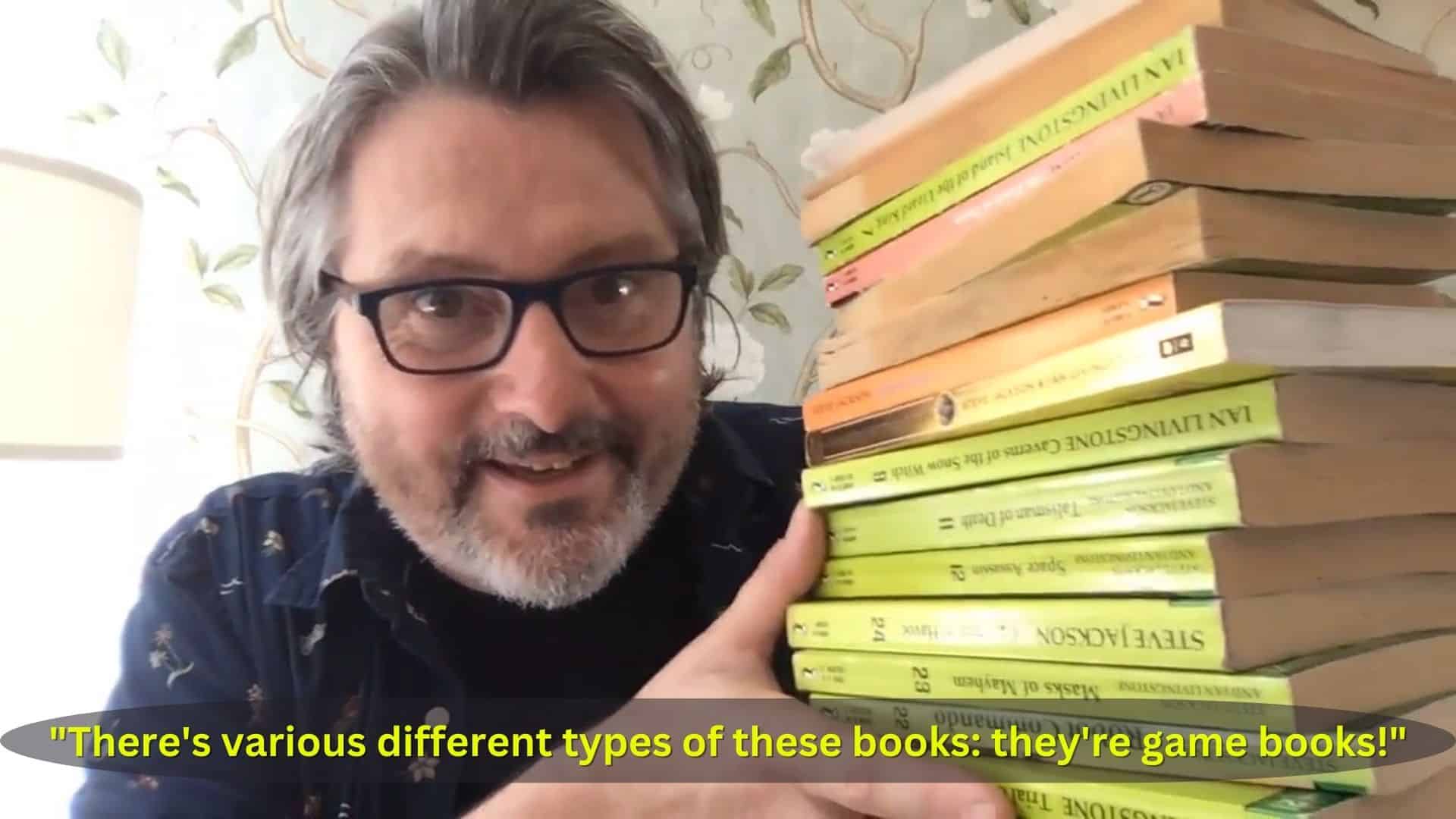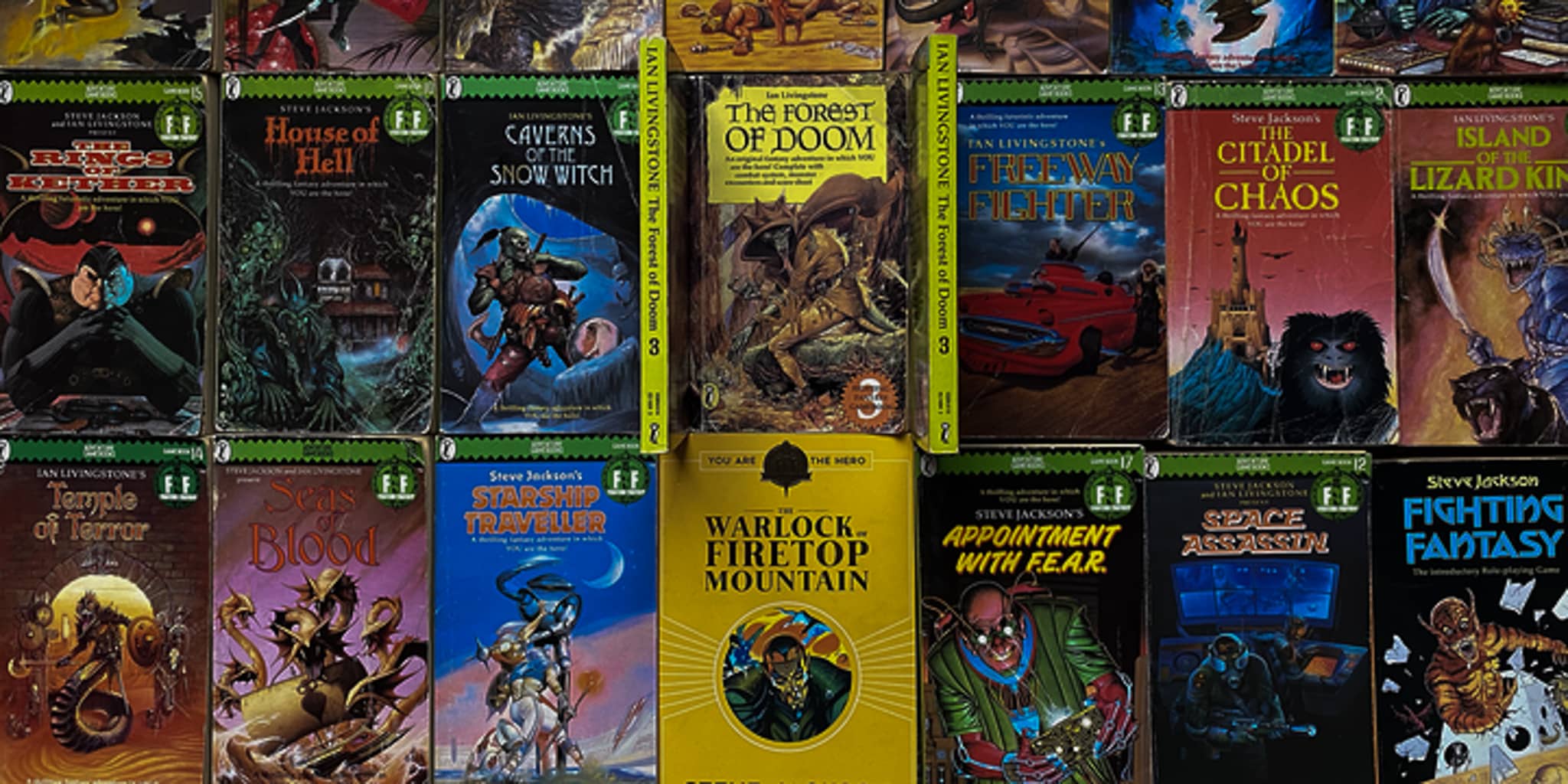by Brock Horning | July 2023
In the new episode of Story Islands, the video podcast for interactive storytellers, Stornaway founders Kate and Ru explore one of Ru’s favourite topics – Choose Your Own Adventure gamebooks. Why were they so beloved during their heyday in the 80s and what inspiration can today’s interactive video creators take from these literary classics?
What were Choose Your Own Adventure (or Fighting Fantasy) books?
Choose Your Own Adventure and Fighting Fantasy were two different series of children’s gamebooks, popular in the 1980s. Written in the second person, readers became the protagonist and had to make choices that determined the story’s outcome.
The original concept was invented by Edward Packard while telling bedtime stories to his daughters. He was struck by their enthusiasm for the story once they had control over the narrative. This element was definitely part of the mass appeal, as Ru reflected. “One of the things that these books unlocked for people like me, was the idea that you could give agency and power to a reader and let them shape the story – that was resonant of a god.”
The Fighting Fantasy series alone sold 20 million copies in the 80s but struggled in competition with computer games during the 90s. Now, a few decades on, these two formats are merging together with interactive video.

Why the Choose Your Own Adventure concept feels more relevant today than ever before
“Storytellers need the opportunity to tell stories in interactive ways because that’s how we live our lives.”
– Kate, Co-CEO and Founder
The Choose Your Own Adventure gamebooks proved that giving people choice enhanced their experience. The call for stories that reflect our non-linear, complex experience of the world is long overdue. We’re confronted with branching decisions constantly in our everyday lives, whether it’s which cheese to buy at the supermarket or which video to watch on Tiktok. With the advent of social media and video games, audiences are increasingly accepting non-linear narratives and expect interactive experiences. We need our stories to reflect that level of choice.
Another benefit of the Choose Your Adventure approach is how it can adapt stories for different audiences. As Kate explains: “We live in a complex world and people’s experience of that world have never been more different”. Giving agency to the audience allows them to create an experience that is more resonant and relevant to their own lives. This brings empowerment and understanding rather than confusion and disjointed experiences.

How to take inspiration from Choose Your Own Adventures gamebooks
The stories and concepts behind Choose Your Own Adventure gamebooks provide key learnings for today’s interactive content creators. Lessons in how to engage and draw audiences through an interactive story are right there in every book. Here are three key learnings that Ru and Kate pulled out:
Give guided choice to your viewers
“Interactive content is a conversation, not a broadcast” Ru states. Choose Your Own Adventure gamebooks guide viewers through the adventure, giving agency but not overwhelmingly unlimited choice. A two-way street of communication.
Catching this perfect mid-ground between too much and too little choice means creators can craft a narrative while giving audiences agency and ownership. If creators are willing to relinquish some elements of control, they may find their stories become even more impactful.
Bring your audience into the story
Crafting a Choose Your Own Adventure style narrative requires creators to think differently from the very beginning. Kate advises that “instead of telling a story and broadcasting it out to the world, think about bringing your audience into this world that already exists.” This simple shift in perception opens up your mindset to explore new possibilities.
Quoting BAFTA award-winning interactive filmmaker Martin Percy, Ru adds: “It’s about turning your audience from viewers into doers. Magical things happen when you unlock that.” Allow ‘doers’ to interact with the world you’ve created and shape their own experience.
Move away from ‘right’ or ‘wrong’ answers
While Choose Your Own Adventure readers often found themselves at dead ends, there were always a variety of ways to reach the book’s ultimate ending. If you only offer one ‘true’ version of the story, you are missing the full potential of interactive narratives.
As Ru explains: “The world is not binary, it’s often not clear what the right choice is for any decision. The best stories do not present a good moral choice and a bad moral choice, you’re confronted with different options and you discover the consequences through the process of watching.”

Top interactive content tips
To finish up, Kate and Ru had the enviable task of selecting one piece of advice for interactive filmmakers they learned from Choose Your Own Adventure gamebooks. Here’s what they said…
Kate’s top tip
“Don’t give meaningless choices that don’t impact the story. Really think about each decision point and how it progresses the narrative.”
Ru’s top tip
“Think about how your audience will experience the narrative. By making the story interactive you are making them, in essence, the protagonist. This is the unique thing about this form of storytelling and worth bearing in mind when designing your story.”
This is a short summary of the themes and ideas discussed in Story Islands Episode 2: Choose Your Own Adventure. Watch the video podcast in full here for more details and nuggets of wisdom from Kate and Ru:

